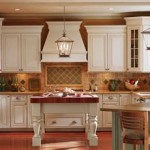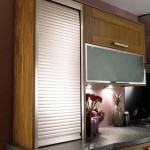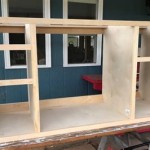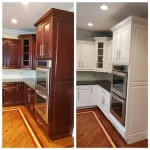Should You Lay Tile Under Kitchen Cabinets or Not?
The question of whether to install tile under kitchen cabinets is a common dilemma during kitchen renovations. While seemingly minor, this decision can have long-term implications for both the functionality and value of the kitchen. Understanding the pros and cons of each approach is crucial for making an informed choice.
Arguments for tiling under cabinets often center on the potential for future remodeling. If cabinets are removed or replaced down the line, having a continuous tile floor underneath avoids the need for patching or finding matching tiles, which can be difficult and costly. This foresight simplifies future renovations and ensures a cohesive aesthetic throughout the kitchen.
Another benefit of tiling the entire floor, including the area under cabinets, is the enhanced moisture protection it offers. Spills and leaks, even minor ones, can seep under cabinets. A tiled surface provides a waterproof barrier, protecting the subfloor from water damage and potential mold growth. This is particularly important in kitchens, which are prone to spills and humidity.
Furthermore, a fully tiled floor offers structural support to the cabinets. While cabinets are primarily supported by the subfloor, the tile adds an extra layer of stability, especially for heavier cabinets filled with dishes and appliances. This can prevent sagging or uneven settling over time.
From an aesthetic perspective, a continuous tile floor creates a seamless and visually appealing look. It avoids awkward transitions or exposed subflooring if cabinets are ever adjusted or removed. This contributes to a higher-quality finish and a more cohesive kitchen design.
However, opting not to tile under cabinets also presents some advantages, primarily related to cost savings. Tiles, along with the associated materials like mortar and grout, represent a significant portion of flooring costs. Eliminating the need to tile the hidden area beneath cabinets can reduce the overall project budget. This saving can be substantial, particularly in larger kitchens.
Furthermore, installing tile under cabinets can increase the installation time and complexity. This can lead to higher labor costs and a longer renovation period. If time is a critical factor in the project, foregoing tiling under cabinets can streamline the installation process.
Another consideration is the potential for trapped moisture. While tiling can protect against surface moisture, if water does penetrate the grout or tile, it can become trapped beneath the cabinets, leading to unseen damage. This can be particularly problematic in areas with high humidity or frequent spills.
Additionally, some argue that tiling under cabinets is unnecessary given that the cabinets themselves provide sufficient protection for the subfloor. As long as the subfloor is properly sealed and level, the cabinets act as a barrier against most spills and damage. This argument holds more weight if the cabinets are unlikely to be moved or replaced in the future.
The decision of whether or not to tile under cabinets is ultimately dependent on individual circumstances and priorities. Factors to consider include the budget, the likelihood of future renovations, the level of moisture protection desired, and the overall aesthetic preferences. Weighing these factors carefully allows homeowners to make an informed decision that best suits their needs and the long-term value of their kitchen.
It's essential to consider the type of cabinets being installed. Standard base cabinets typically sit directly on the floor, making access to the subfloor beneath them difficult. However, if installing cabinets with legs or a toe-kick area, accessing the subfloor for repairs or inspections becomes easier, potentially mitigating some of the concerns associated with not tiling underneath.
The existing subfloor condition is another critical factor. If the subfloor is uneven or damaged, tiling the entire floor, including under the cabinets, provides a level and stable surface for cabinet installation. This ensures proper cabinet support and prevents issues down the line.
Finally, consulting with a qualified contractor is highly recommended. A contractor can assess the specific conditions of the kitchen, offer expert advice on the best approach, and provide accurate cost estimates for both scenarios. This professional guidance can be invaluable in making an informed decision about tiling under cabinets.
Understanding the nuances of each approach – tiling under cabinets versus not tiling – empowers homeowners to make a decision that aligns with their long-term goals and maximizes the value of their kitchen renovation. Careful consideration of factors such as budget, future plans, and moisture protection will guide homeowners towards the most appropriate choice for their specific circumstances.

Should You Install Tile Floor Before Or After Cabinets

Can You Replace Kitchen Flooring Without Removing Cabinets

Should You Install Tile Floor Before Or After Cabinets

Should You Install Tile Floor Before Or After Cabinets
.jpg?strip=all)
Should You Install Tile Under Cabinets

Should You Install Tile Under Cabinets

Should You Install Tile Floor Before Or After Cabinets

Do You Install Tile Flooring Or Kitchen Cabinets First

Let S To Tile Or Not Hi Sugarplum

Do You Want To Put Tiles Behind The Cabinets Will Know After Reading This Article Zibo Honor Ceramic








